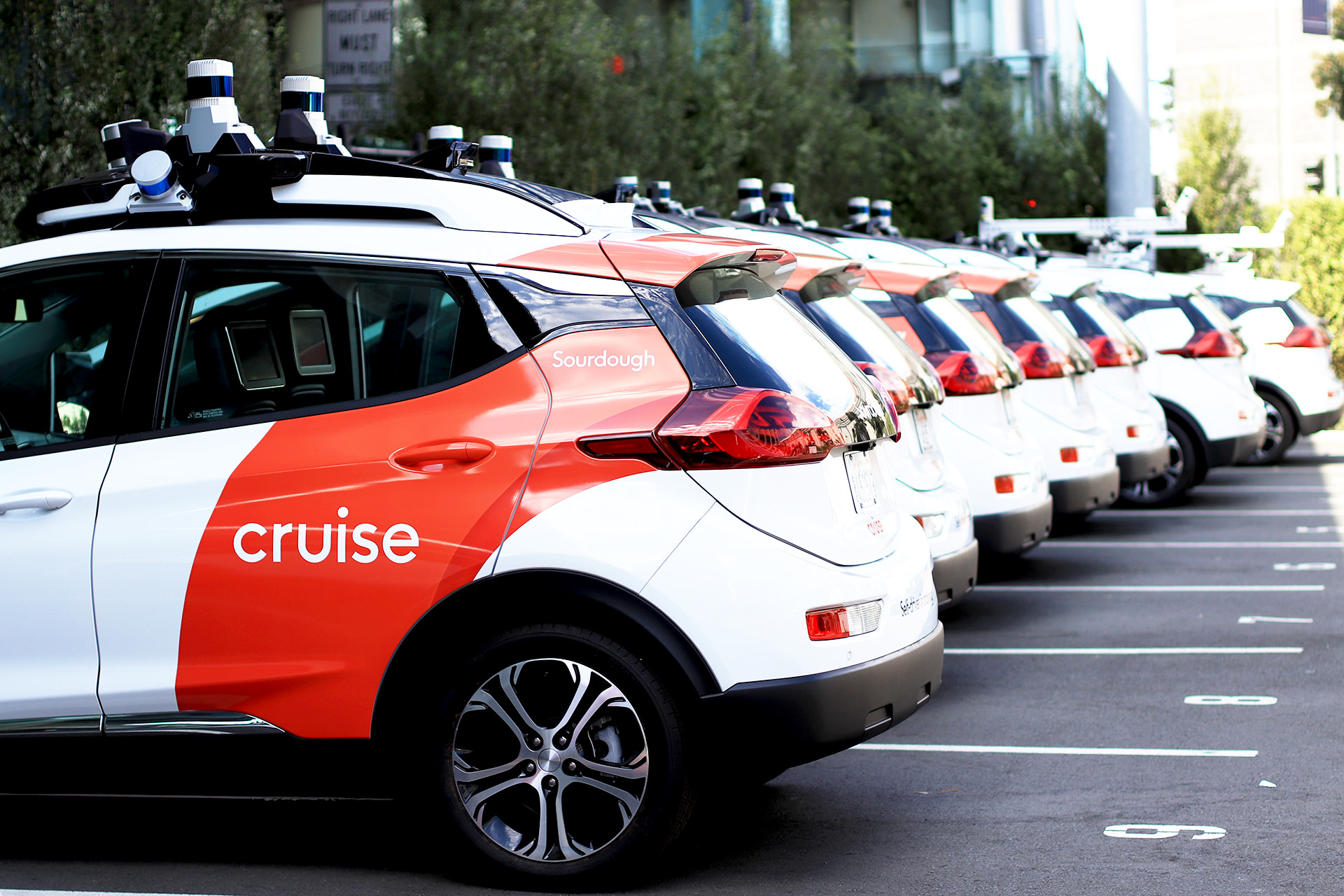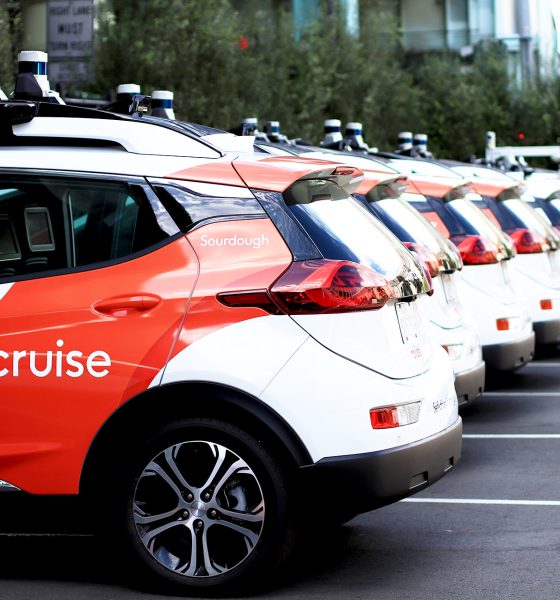General Motors’ (GM’s) driverless ride-hailing company Cruise has been hit with its latest fine, after the company failed to disclose certain details about an accident involving a pedestrian last October.
Cruise has agreed to pay a $500,000 criminal fine over the record it submitted following an accident with a pedestrian last October, as detailed by the Department of Justice (DOJ) in deferred prosecution that was revealed on November 14 (via Automotive News). The decision was made within the U.S. Attorney’s Office in the Northern District of California, and it comes as the most recent legal penalty the company has had to pay after regulators said it “omitted” and “misrepresented” details about the accident.
According to NHTSA special agent Cory Legars, who is overseeing the Cruise case, the fine is intended to help hold Cruise and its staff accountable, following a “lack of candor” in response to the 2023 crash in which a robotaxi dragged and pinned a pedestrian.
The DOJ echoed the company’s withholding of certain details following the accident, which caused “multiple traumatic injuries” for the pedestrian, according to emergency responders. Cruise has also been criticized over its response to the accident by other agencies, including the California Public Utilities Commission (CPUC) and the state’s Department of Motor Vehicles (DMV).
Along with the fine, Cruise must also implement a safety compliance program, submit yearly reports to the U.S. Attorney’s Office, and cooperate with all government agency investigations.
In a written statement, Cruise Chief Administrative Officer Craig Glidden said that company maintained a “firm commitment to transparency with our regulators.”
Cruise leadership pledges more transparency, greater culture of safety in new letter
Cruise’s October 2023 accident and other crash response fines
In the accident, which took place on October 2, 2023, a Cruise robotaxi struck a pedestrian moments after she had been hit by a car with a human driver. The pedestrian ended up in the path of the Cruise vehicle, which hit her, dragged her about 20 feet, and engaged an emergency stop sequence that caused the vehicle to stop on top of her with hazard lights on until authorities arrived.
Following the accident, the DMV and other agencies noted that Cruise avoided sharing certain details, including exactly what the robotaxi did after it ran over the individual. Weeks later, Cruise disclosed a more full version of events, but it was only after the DMV specifically requested more details. The agency also suspended Cruise’s permit to operate self-driving vehicles, effective immediately.
“Cruise’s omission hinders the ability of the department to effectively and timely evaluate the safe operation of Cruise vehicles and puts the safety of the public at risk,” said Bernard Soriano, DMV deputy director, after the accident.
In the following weeks and months, Cruise would go on to see a significant staff and executive shake-up, with its two co-founders resigning alongside several other high-level employees. The company also went on to let go of around a quarter of its staff, before hiring several new executives in attempts to regain public and regulator trust and relaunch the service.
Cruise is currently aiming to reboot driverless ride-hailing sometime this year, though it has faced multiple fines from agencies and regulators in addition to the $500,000 agreement with the DOJ.
In June, following months of commission deliberation, Cruise was ordered by the CPUC to pay the maximum penalty of $112,500 for its crash response, after the company originally lobbied for a fine of just $75,000. In September, the NHTSA ordered Cruise to pay a $1.5 million fee, along with submitting a corrective action plan and additional details on how the company plans to fulfill reporting standards in any future incidents.
What are your thoughts? Let me know at zach@teslarati.com, find me on X at @zacharyvisconti, or send us tips at tips@teslarati.com.
Cruise robotaxi pedestrian accident review concludes with strange findings

News
Tesla is not sparing any expense in ensuring the Cybercab is safe
Images shared by the longtime watcher showed 16 Cybercab prototypes parked near Giga Texas’ dedicated crash test facility.

The Tesla Cybercab could very well be the safest taxi on the road when it is released and deployed for public use. This was, at least, hinted at by the intensive safety tests that Tesla seems to be putting the autonomous two-seater through at its Giga Texas crash test facility.
Intensive crash tests
As per recent images from longtime Giga Texas watcher and drone operator Joe Tegtmeyer, Tesla seems to be very busy crash testing Cybercab units. Images shared by the longtime watcher showed 16 Cybercab prototypes parked near Giga Texas’ dedicated crash test facility just before the holidays.
Tegtmeyer’s aerial photos showed the prototypes clustered outside the factory’s testing building. Some uncovered Cybercabs showed notable damage and one even had its airbags engaged. With Cybercab production expected to start in about 130 days, it appears that Tesla is very busy ensuring that its autonomous two-seater ends up becoming the safest taxi on public roads.
Prioritizing safety
With no human driver controls, the Cybercab demands exceptional active and passive safety systems to protect occupants in any scenario. Considering Tesla’s reputation, it is then understandable that the company seems to be sparing no expense in ensuring that the Cybercab is as safe as possible.
Tesla’s focus on safety was recently highlighted when the Cybertruck achieved a Top Safety Pick+ rating from the Insurance Institute for Highway Safety (IIHS). This was a notable victory for the Cybertruck as critics have long claimed that the vehicle will be one of, if not the, most unsafe truck on the road due to its appearance. The vehicle’s Top Safety Pick+ rating, if any, simply proved that Tesla never neglects to make its cars as safe as possible, and that definitely includes the Cybercab.
Elon Musk
Tesla’s Elon Musk gives timeframe for FSD’s release in UAE
Provided that Musk’s timeframe proves accurate, FSD would be able to start saturating the Middle East, starting with the UAE, next year.

Tesla CEO Elon Musk stated on Monday that Full Self-Driving (Supervised) could launch in the United Arab Emirates (UAE) as soon as January 2026.
Provided that Musk’s timeframe proves accurate, FSD would be able to start saturating the Middle East, starting with the UAE, next year.
Musk’s estimate
In a post on X, UAE-based political analyst Ahmed Sharif Al Amiri asked Musk when FSD would arrive in the country, quoting an earlier post where the CEO encouraged users to try out FSD for themselves. Musk responded directly to the analyst’s inquiry.
“Hopefully, next month,” Musk wrote. The exchange attracted a lot of attention, with numerous X users sharing their excitement at the idea of FSD being brought to a new country. FSD (Supervised), after all, would likely allow hands-off highway driving, urban navigation, and parking under driver oversight in traffic-heavy cities such as Dubai and Abu Dhabi.
Musk’s comments about FSD’s arrival in the UAE were posted following his visit to the Middle Eastern country. Over the weekend, images were shared online of Musk meeting with UAE Defense Minister, Deputy Prime Minister, and Dubai Crown Prince HH Sheikh Hamdan bin Mohammed. Musk also posted a supportive message about the country, posting “UAE rocks!” on X.
FSD recognition
FSD has been getting quite a lot of support from foreign media outlets. FSD (Supervised) earned high marks from Germany’s largest car magazine, Auto Bild, during a test in Berlin’s challenging urban environment. The demonstration highlighted the system’s ability to handle dense traffic, construction sites, pedestrian crossings, and narrow streets with smooth, confident decision-making.
Journalist Robin Hornig was particularly struck by FSD’s superior perception and tireless attention, stating: “Tesla FSD Supervised sees more than I do. It doesn’t get distracted and never gets tired. I like to think I’m a good driver, but I can’t match this system’s all-around vision. It’s at its best when both work together: my experience and the Tesla’s constant attention.” Only one intervention was needed when the system misread a route, showcasing its maturity while relying on vision-only sensors and over-the-air learning.
News
Tesla quietly flexes FSD’s reliability amid Waymo blackout in San Francisco
“Tesla Robotaxis were unaffected by the SF power outage,” Musk wrote in his post.

Tesla highlighted its Full Self-Driving (Supervised) system’s robustness this week by sharing dashcam footage of a vehicle in FSD navigating pitch-black San Francisco streets during the city’s widespread power outage.
While Waymo’s robotaxis stalled and caused traffic jams, Tesla’s vision-only approach kept operating seamlessly without remote intervention. Elon Musk amplified the clip, highlighting the contrast between the two systems.
Tesla FSD handles total darkness
The @Tesla_AI account posted a video from a Model Y operating on FSD during San Francisco’s blackout. As could be seen in the video, streetlights, traffic signals, and surrounding illumination were completely out, but the vehicle drove confidently and cautiously, just like a proficient human driver.
Musk reposted the clip, adding context to reports of Waymo vehicles struggling in the same conditions. “Tesla Robotaxis were unaffected by the SF power outage,” Musk wrote in his post.
Musk and the Tesla AI team’s posts highlight the idea that FSD operates a lot like any experienced human driver. Since the system does not rely on a variety of sensors and a complicated symphony of factors, vehicles could technically navigate challenging circumstances as they emerge. This definitely seemed to be the case in San Francisco.
Waymo’s blackout struggles
Waymo faced scrutiny after multiple self-driving Jaguar I-PACE taxis stopped functioning during the blackout, blocking lanes, causing traffic jams, and requiring manual retrieval. Videos shared during the power outage showed fleets of Waymo vehicles just stopping in the middle of the road, seemingly confused about what to do when the lights go out.
In a comment, Waymo stated that its vehicles treat nonfunctional signals as four-way stops, but “the sheer scale of the outage led to instances where vehicles remained stationary longer than usual to confirm the state of the affected intersections. This contributed to traffic friction during the height of the congestion.”
A company spokesperson also shared some thoughts about the incidents. “Yesterday’s power outage was a widespread event that caused gridlock across San Francisco, with non-functioning traffic signals and transit disruptions. While the failure of the utility infrastructure was significant, we are committed to ensuring our technology adjusts to traffic flow during such events,” the Waymo spokesperson stated, adding that it is “focused on rapidly integrating the lessons learned from this event, and are committed to earning and maintaining the trust of the communities we serve every day.”










